At the yard where my horses are kept, there is a beautiful piece of wood, sliced straight through the trunk of the tree, it has some terrific markings, it would look beautiful painted on. My friend and I managed to get it to an overhang, where it could dry out slowly, then when dry, slice it into thinner sections to be painted on. In the mean time I found a very small slice to practice painting on, I sanded it just enough ( as it was only to practice on) and went for it with the oil paint. This all went well, after the first layer I left it on the shelf to dry, and planned to go back to it in a couple of weeks for the subsequent layers of oil paint. Well the two weeks were up, I grabbed it off the shelf, and shock, there was a huge crack, heading towards the middle of the slice. Turns out it is a soft wood I had used, and the piece we had grabbed to dry under the overhang is also soft wood. I learned a HARD WOOD lesson. Painting on soft wood is risky, as prone to cracks, in future I will look out for hard wood. Thank goodness this was a practice piece.
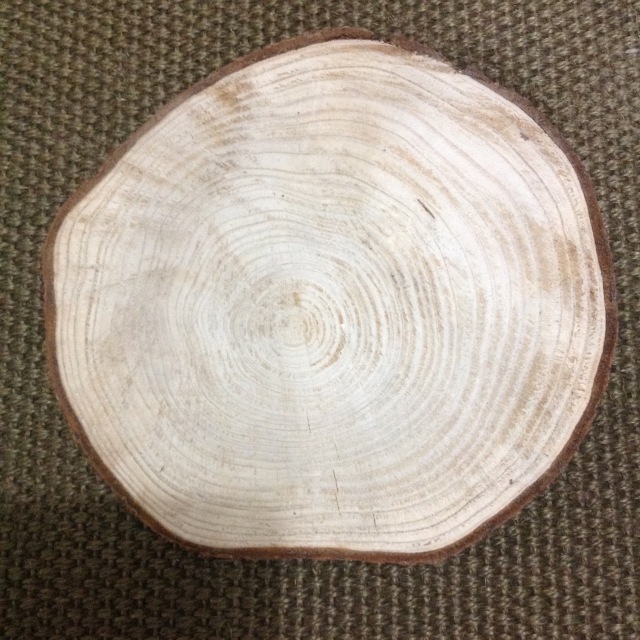
BEFORE Wood slice lightly sanded

AFTER Oil painting on wood slice, unfortunately it was soft wood and cracked


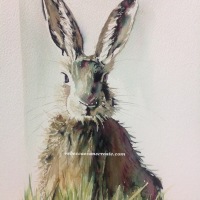


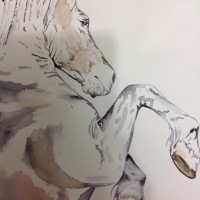
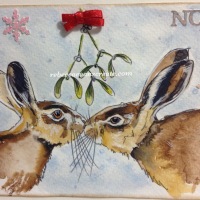
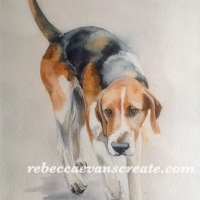
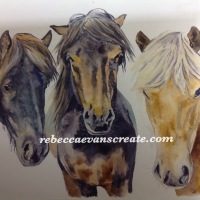
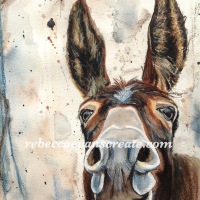

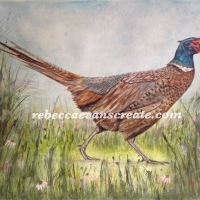
ah….watching my son-in-law work with a huge slice intended for a table top, I am not surprised that you had this experience. He had his start to split even after varnishing and carefully working with it. There are a lot of factors involved as to why they split. I even wonder if a heavier wood would have that tendency as well. He is very knowledgeable about wood and I’ll have to ask him. Your rabbit turned out well, too bad about the crack and at the back! 😦 darn.
LikeLiked by 1 person
Oh gosh Margaret that is interesting to know, if you ask him please do let me know. I was gutted about this one, I had been enjoying painting him, just pleased I never got to finish him, I would have been more gutted. I bet your son was devastated having that happen after being so so careful.
LikeLiked by 1 person
I’ll be seeing him today and will ask….he had it split but worked around it and allowed it to be part of the table design….I will ask for details. 🙂
LikeLiked by 1 person
Brilliant Margaret thank you, and well done to him for making it a feature, I don’t think I can do that with this hare?
LikeLiked by 1 person
hmm…..it depends, if it were to have that split going up through your foliage and pointing towards him. But then you can’t control that one. If I remember correctly if you have a knot in the wood, it is more likely to split but there weren’t any knots in your piece of wood, right? Also, as you probably know there are more knots in soft wood than hard wood. I can’t wait to ask him, my interest is up on this subject 🙂
LikeLiked by 1 person
No knots, the slice is about 1 inch, but not level, as was cut for fire wood, and not professionally sliced
LikeLiked by 1 person
My son-in-law says that it is best to work from a log that has been thoroughly dried and then slice it but should be more than an inch slice. Also the tighter the rings, the better between…..the dark part of the rings is the hardest part of the soft wood…so the tighter, the better. If you notice, there are several rings that are fat (good years of growth) Also it is very important to have it very slowly drying….even having it get wet everyday to slow down that process. I know it sounds like going the other direction but it keeps the wood from drying out too quickly…that is why it split. Anyhoo it might be worth getting a hold of wood from a place that has a kiln and works with wood. I am learning something in this too, so interesting!
LikeLiked by 1 person
Ummm, well that is very helpful, tight rings, etc, all makes complete sense. Regarding the kiln, can it go in a pottery kiln? I have one at work, although I could not fit anything large in it.
LikeLike
He isn’t familiar with a pottery kiln and not sure about the temp. I would suggest to call a person who works with specialty wood items who has a kiln and ask if it would work. It is worth looking into though….I hope that you find a way of doing it because I think that having a painting on a round slice is really cool.
LikeLiked by 1 person
Thank you Margaret, so really useful advice, I will pursue further as I too think it could be a cool look on a round surface, it’s like nature meets nature with a hare 😀
LikeLiked by 1 person
exactly and with those rings, it would be so cool 🙂
LikeLiked by 1 person
What a wonderful idea!
LikeLiked by 1 person
Would have been better if I had researched first, I might then have discovered that hard wood was the answer 😀
LikeLike
the crack kind of gives it character 🙂
LikeLiked by 1 person
I guess it kind of does, my mum said the same, however my worry is that the crack keeps spreading, grrrrr.
LikeLiked by 1 person
Possible. Yikes. 😙
LikeLiked by 1 person
Working with dry wood would help Rebecca. If its prone to cracking it will crack while drying. 🙂 The rabbit is adorable and the crack provides more character to the piece.
LikeLiked by 1 person
I think you are right, although it had been stored while drying, and it looked and felt dry when sanded, it clearly wasn’t dry enough, big lesson learnt!
LikeLiked by 1 person
Wood takes a long time to dry. A lesson I learned the hard way too.
LikeLiked by 1 person
Yes, I thought it was very dry, as left for six months, but never mind, another day, another lesson
LikeLiked by 1 person
Really beautiful and I hear you about possible spreading, otherwise I bet I’d almost like it too. Could be a “statement” piece.
LikeLiked by 1 person
It’s interesting, as the consensus is that people don’t really seem to mind the crack. Time to get the oils out again to finish it maybe.
LikeLiked by 1 person
Lovely painting and such an interesting learning experience working with a ‘wooden canvas’. I fall into the camp of “the crack adds character”. Even if the piece splits in half it can still be presented as a ‘whole’. Cracks, splits and other naturally made marks always seem to add another layer, sometimes a counterpoint between nature made beauty and human aesthetics.
LikeLiked by 1 person
This is very true, I hadn’t thought about it like that, maybe I can find the love for it and finish the hare properly 😀
LikeLiked by 1 person
This is Amazing Rebecca 😍You can work on any medium 🙂 🙂
LikeLiked by 1 person
Thank you Snehal, I will find a better piece of wood next time
LikeLiked by 1 person
And yet, I like it with this extra personality.
LikeLiked by 1 person
Thank you Teri, there is a lot of love for the crack 😀
LikeLiked by 1 person
This is beautiful, and what a great idea. I don’t mind the crack; imperfection is a reflection of life. (K)
LikeLiked by 1 person
Thank you Kerfe, perfect statement, nature behaving as nature does best, unpredictable!
LikeLiked by 1 person